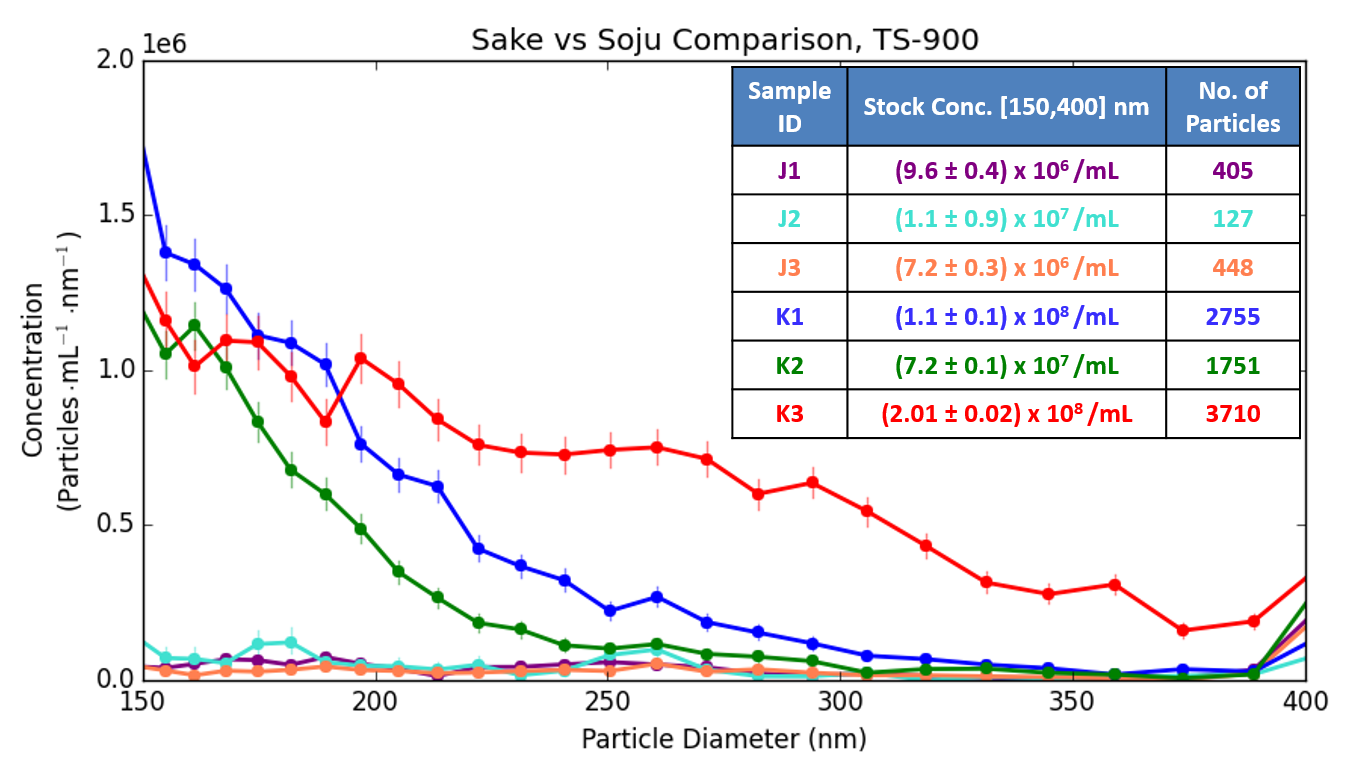EveryDayTM nanoparticles: soju & saké
At Spectradyne, we are always curious about the nanoparticle content of any material! For this reason, we created our "Everyday Nanoparticles" series, so we could share some of the data from objects that piqued our curiosity.
Soju and saké are both liquors made from rice as a base. However, soju is from Korea (sometimes confused with shochu, which is Japanese), and may also contain other starches such as sweet potato. While the main ingredients are similar, the primary difference between soju and saké is how they are made: Soju is distilled, while saké is fermented.
Many will argue over their taste preferences, but we wanted to find out if we can tell the two apart by their nanoparticle content. We purchased three bottles each of popular soju and saké products, and put them to the test with the nCS1. Each sample was diluted to 0.8x stock with PBST (phosphate buffered saline with Tween-20).

